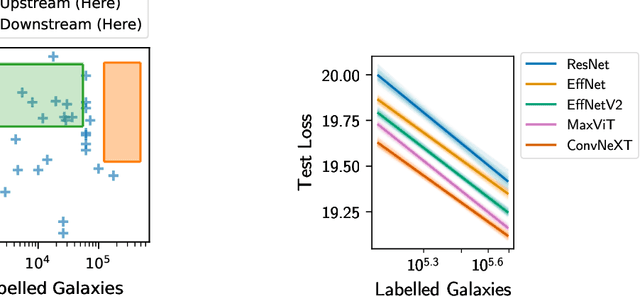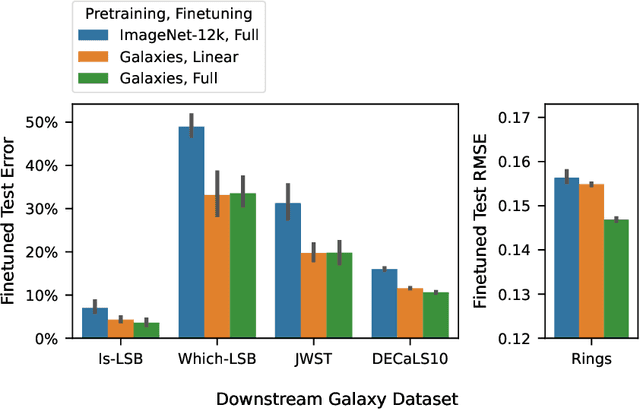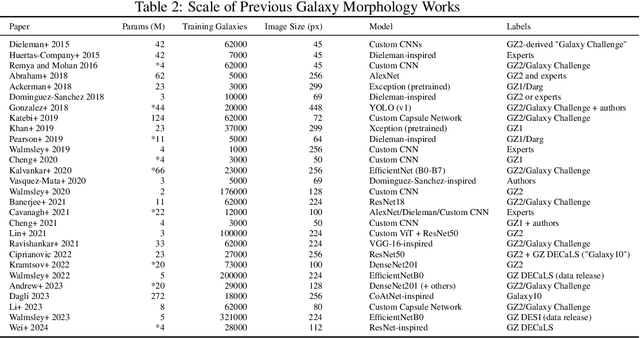Robert G. Mann
Scaling Laws for Galaxy Images
Apr 03, 2024



Abstract:We present the first systematic investigation of supervised scaling laws outside of an ImageNet-like context - on images of galaxies. We use 840k galaxy images and over 100M annotations by Galaxy Zoo volunteers, comparable in scale to Imagenet-1K. We find that adding annotated galaxy images provides a power law improvement in performance across all architectures and all tasks, while adding trainable parameters is effective only for some (typically more subjectively challenging) tasks. We then compare the downstream performance of finetuned models pretrained on either ImageNet-12k alone vs. additionally pretrained on our galaxy images. We achieve an average relative error rate reduction of 31% across 5 downstream tasks of scientific interest. Our finetuned models are more label-efficient and, unlike their ImageNet-12k-pretrained equivalents, often achieve linear transfer performance equal to that of end-to-end finetuning. We find relatively modest additional downstream benefits from scaling model size, implying that scaling alone is not sufficient to address our domain gap, and suggest that practitioners with qualitatively different images might benefit more from in-domain adaption followed by targeted downstream labelling.
Renewal Strings for Cleaning Astronomical Databases
Aug 07, 2014



Abstract:Large astronomical databases obtained from sky surveys such as the SuperCOSMOS Sky Surveys (SSS) invariably suffer from a small number of spurious records coming from artefactual effects of the telescope, satellites and junk objects in orbit around earth and physical defects on the photographic plate or CCD. Though relatively small in number these spurious records present a significant problem in many situations where they can become a large proportion of the records potentially of interest to a given astronomer. In this paper we focus on the four most common causes of unwanted records in the SSS: satellite or aeroplane tracks, scratches fibres and other linear phenomena introduced to the plate, circular halos around bright stars due to internal reflections within the telescope and diffraction spikes near to bright stars. Accurate and robust techniques are needed for locating and flagging such spurious objects. We have developed renewal strings, a probabilistic technique combining the Hough transform, renewal processes and hidden Markov models which have proven highly effective in this context. The methods are applied to the SSS data to develop a dataset of spurious object detections, along with confidence measures, which can allow this unwanted data to be removed from consideration. These methods are general and can be adapted to any future astronomical survey data.
 Add to Chrome
Add to Chrome Add to Firefox
Add to Firefox Add to Edge
Add to Edge